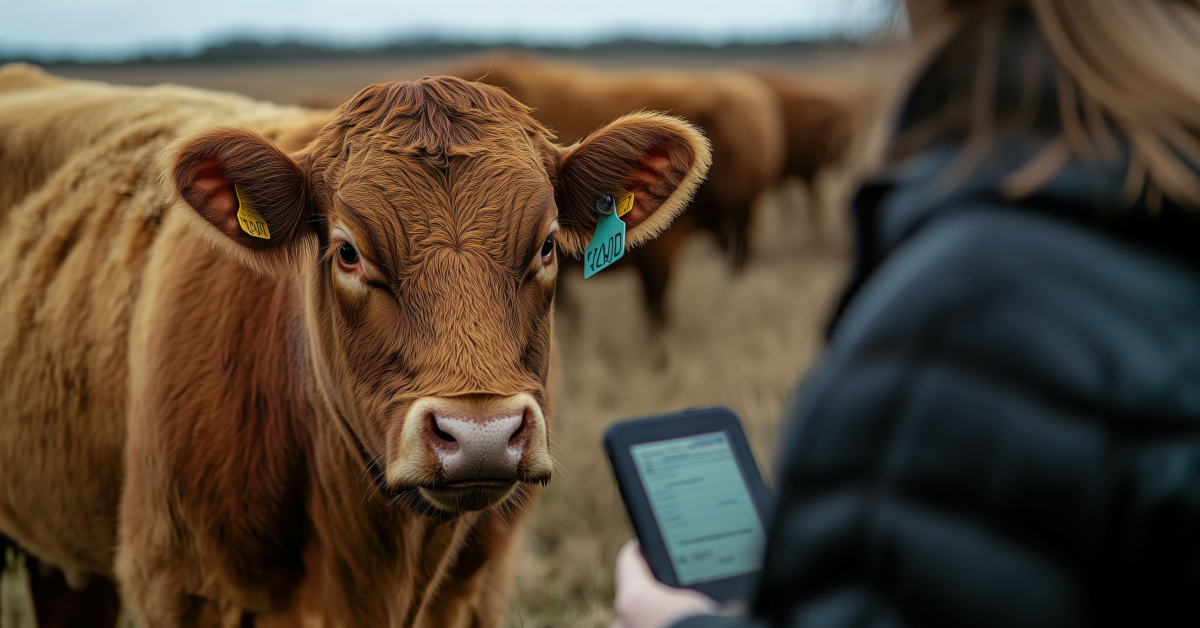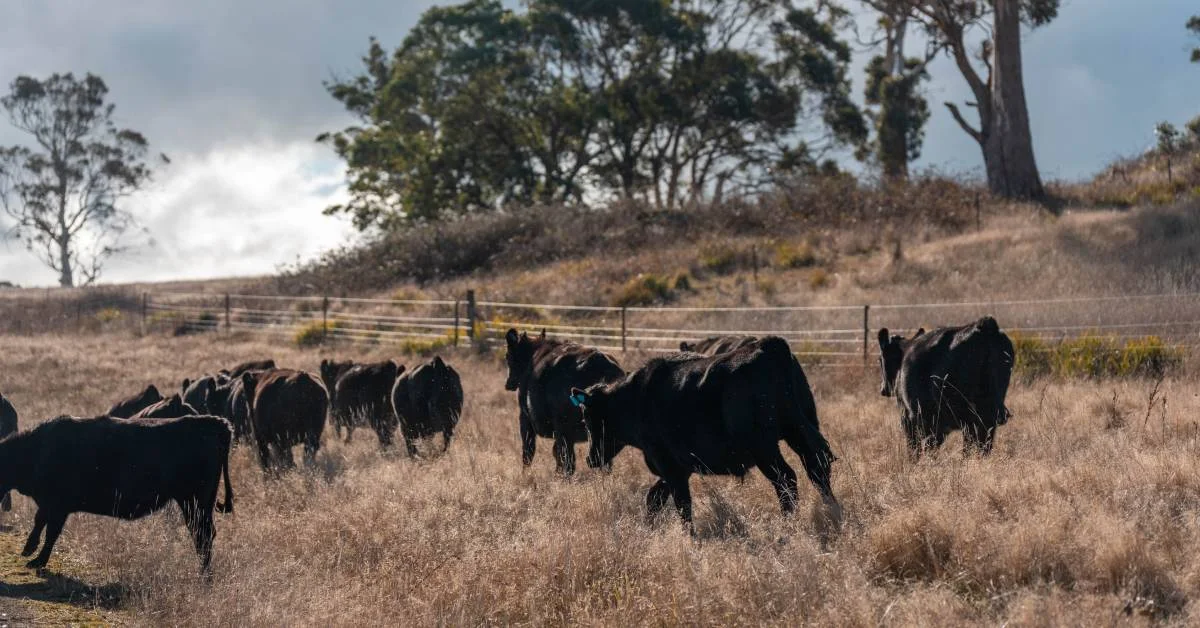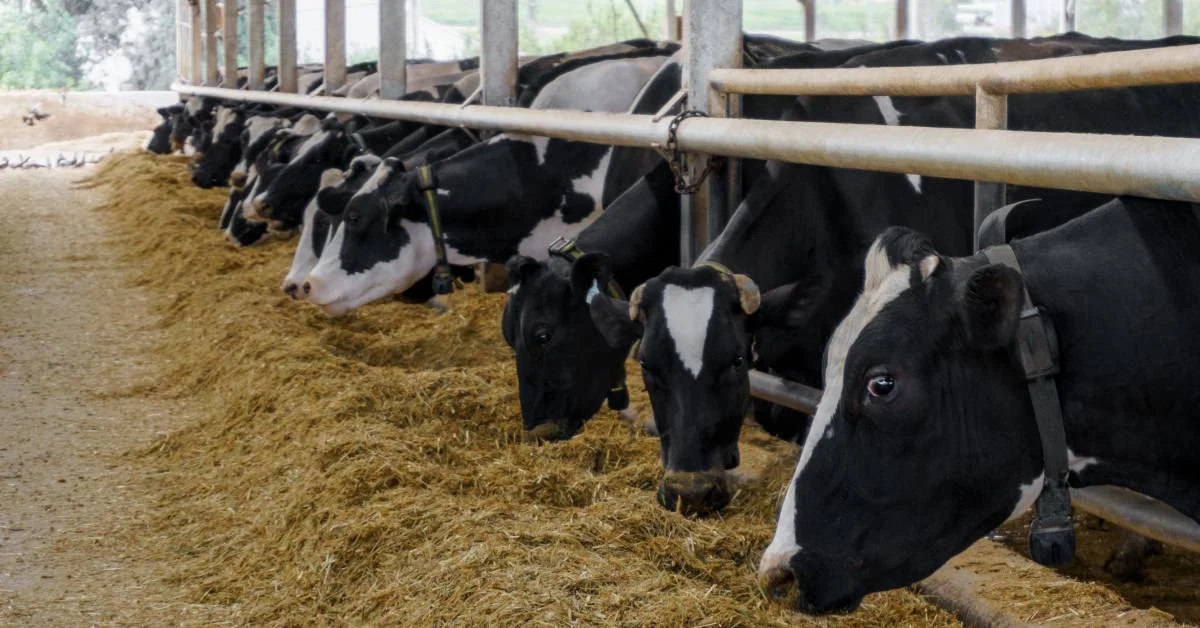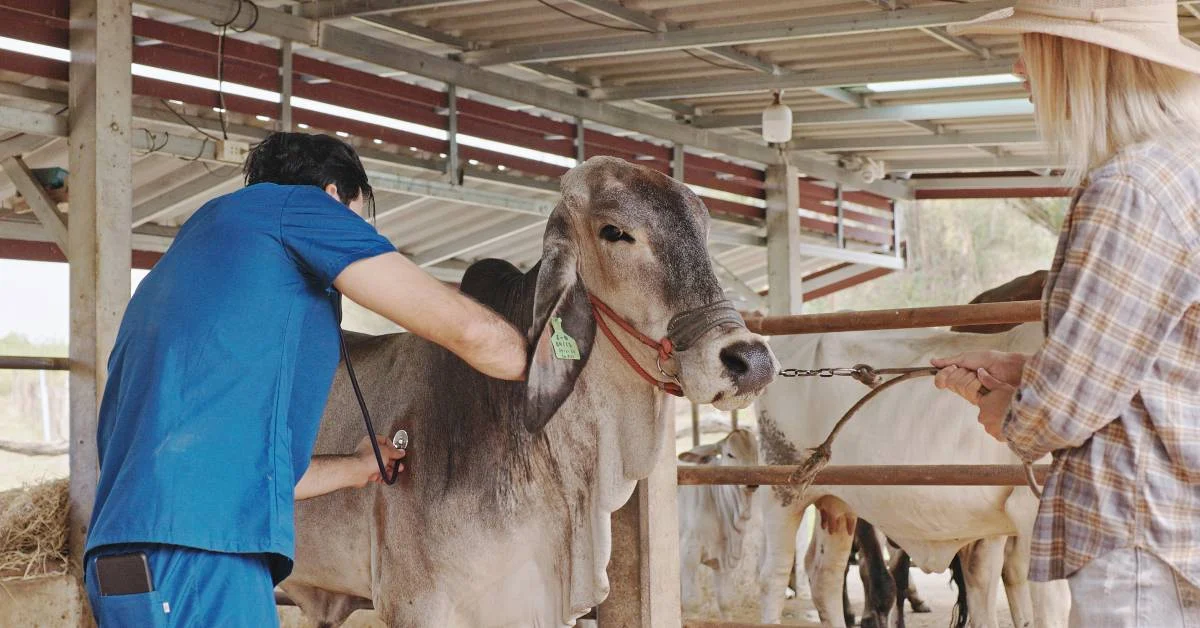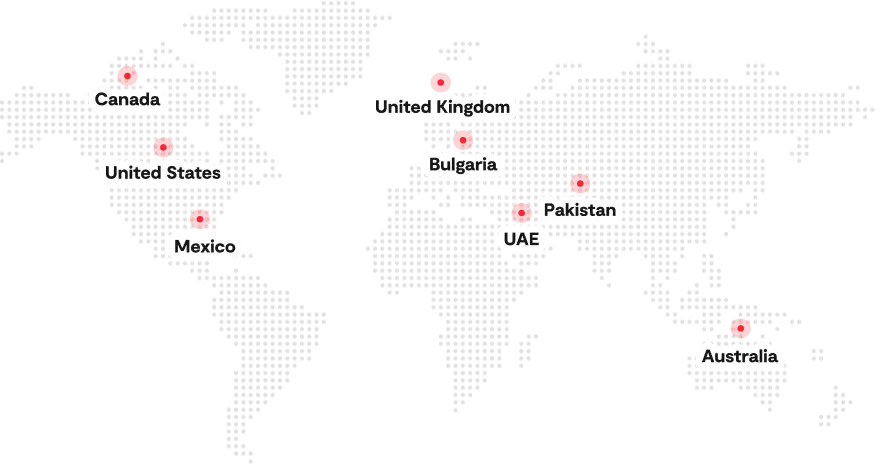In 2025, the success of cattle operations—whether ranches, feedlots, or processing facilities—will be increasingly defined by two critical factors: supplier compliance and rigorous quality control. With tightening regulations and rising consumer demand for transparency, the industry can no longer afford inefficiencies or blind spots in traceability.
Recent audits have highlighted significant supply chain vulnerabilities, with inconsistencies leading to millions in recalls, rejected shipments, and non-compliance penalties. As global markets enforce stricter traceability standards, operations still relying on fragmented or outdated tracking methods risk supplier relationships, market access, and overall profitability.
However, by implementing robust cattle traceability software, cattle operations can turn compliance from a regulatory burden into a strategic advantage. A well-integrated system ensures that every supplier meets quality benchmarks, every lot is verifiable, and every transaction is backed by accurate, real-time data, minimizing risk and maximizing operational control.
This article will break down how cattle traceability enhances supplier compliance and quality control, positioning livestock businesses for long-term resilience and success in an evolving regulatory landscape.
The Challenges of Cattle Traceability Without Proper Systems
Despite the critical role of cattle traceability in ensuring supplier compliance and quality control in livestock operations, many operations still rely on fragmented record-keeping methods, manual logs, or outdated tracking systems. This lack of an integrated approach creates gaps in visibility, making it difficult to track cattle movement, verify cattle feed supplier performance, and respond timely to health or quality concerns.
Without a proper traceability system in place, cattle producers and feedlots face several key challenges:
1. Regulatory Non-Compliance and Market Barriers
Governments and regulatory bodies worldwide are tightening their livestock traceability requirements. Standards like HACCP (Hazard Analysis and Critical Control Points) and FSMA (Food Safety Modernization Act) demand precise record-keeping, supplier verification, and documented safety measures. Operations relying on paper-based records or siloed digital tools struggle to provide real-time data during audits, increasing the risk of non-compliance, hefty fines, or restricted market access.
2. Disease Outbreaks and Biosecurity Risks
When a disease outbreak occurs, such as bovine spongiform encephalopathy (BSE) or foot-and-mouth disease (FMD), traceability is critical to identifying the source and containing its spread. Without a robust tracking system, feedlots and ranchers face delays in tracing affected cattle back to suppliers, leading to longer containment periods, potential herd losses, and reputational damage. A lack of real-time traceability also complicates adherence to disease control programs, putting entire supply chains at risk.
3. Inconsistent Quality Control and Supplier Performance Issues
Supplier accountability is a major challenge when traceability is weak. Without detailed livestock supplier metrics, operations cannot effectively track factors such as:
- Feed quality and sourcing inconsistencies lead to poor weight gain or health issues.
- Variability in genetics and breeding records affects meat quality and yield.
- Gaps in vaccination and medical history increase susceptibility to disease.
Without centralized, real-time tracking, these inconsistencies can go undetected, impacting the overall quality of cattle and making it difficult to enforce supplier performance standards.
4. Supply Chain Inefficiencies and Data Silos
A fragmented traceability system makes it difficult to synchronize data across different stages of the cattle lifecycle. Many operations rely on separate systems for feed management, health records, and supplier tracking, resulting in data silos that hinder decision-making. The inability to seamlessly share information across supply chain partners increases errors in inventory management, shipment tracking delays, and miscommunication between suppliers, processors, and regulators.
5. Financial and Operational Losses Due to Recall Inefficiencies
When contamination or quality issues arise, the speed of traceback determines financial risk. Operations with incomplete or disorganized traceability records struggle to identify affected batches, leading to:
- Wider-than-necessary product recalls, inflating costs.
- Loss of consumer trust due to delays in corrective actions.
- Legal liabilities and contract disputes over unverified supplier claims.
Without structured traceability, cow-calf operators and feedlots struggle with compliance risks, supplier inconsistencies, and inaccurate records. A cattle management software with offline data collection ensures uninterrupted record-keeping in remote pastures, movement tracking helps monitor cattle transfers between locations, and automated reports simplify audits, allowing producers to verify sourcing, assess supplier performance, and meet regulatory standards with confidence.
Moreover, robust traceability systems not only ensure compliance and quality control but also uphold animal welfare standards, aligning with the ethical practices advocated by leading animal charities.
How Cattle Traceability Strengthens Supplier Compliance
Ensuring supplier compliance in cow-calf operations, feedlots, and beef processing facilities isn’t just about meeting regulatory checkboxes; it’s about guaranteeing consistent livestock quality, food safety, and smooth supply chain operations. However, without an integrated traceability system, verifying supplier compliance with feed regulations, vaccination protocols, or genetic standards becomes nearly impossible. This not only increases compliance risks but also leads to inconsistent meat quality, poor supplier performance in feedlots, and supply chain disruptions.
A centralized cattle traceability system directly enhances supplier compliance by:
- Ensuring Verified Supplier Data for Regulatory Audits
Regulatory frameworks like HACCP, FSMA, and USDA’s Animal Disease Traceability (ADT) program require detailed cattle movement logs, feed sourcing records, and health reports. A digitized traceability system centralizes this data, allowing instant retrieval during audits and reducing the risk of non-compliance penalties, rejected shipments, or restricted market access.
- Standardizing Quality Control Across Livestock Suppliers
The quality of cattle feed, medical history, and breeding lineage directly impact weight gain, meat yield, and overall herd health. Without real-time tracking, feedlots and production plants risk sourcing livestock with poor genetics or inadequate health records. A traceability-integrated system provides real-time insights to livestock supplier metrics, ensuring only compliant, high-quality livestock enter the production chain.
- Minimizing Liability in Disease Outbreaks and Product Recalls
If BSE, foot-and-mouth disease, or contamination enters the supply chain, identifying affected cattle without accurate supplier records can lead to broader-than-necessary recalls and consumer distrust. Traceability systems pinpoint affected batches instantly, enabling precise recalls that mitigate financial and reputational damage while ensuring public health safety.
- Automating Supplier Onboarding and Performance Monitoring
Supplier compliance requires ongoing monitoring to track adherence to food safety, vaccination schedules, and genetic selection protocols. An integrated ERP system automates supplier evaluations, flags inconsistencies in sourcing, and simplifies approval workflows, reducing manual record-keeping errors.
By centralizing supplier data and automating compliance workflows, cattle producers can quickly identify risks, enforce quality benchmarks, and make data-driven sourcing decisions that strengthen the entire beef supply chain.
Key Metrics for Evaluating Supplier Performance Through Cattle Traceability
Effective supplier performance tracking in feedlots depends on precise data at every stage, from sourcing to sale. Cattle traceability ties each metric to specific suppliers, allowing feedlot operators to measure supplier efficiency, cost-effectiveness, and impact on overall profitability.
Tracking Supplier Performance at Each Stage
Here are the three stages and their corresponding metrics for evaluating supplier performance:
Stage 1: Purchasing/Receiving
| Metric | What Can Be Tracked? | How It Helps Feedlots & Cow-Calf Operators |
| Total Purchased | Number of animals sourced per supplier | Helps assess supplier dependency and ensures sourcing diversification. |
| Average Laid-In Cost | Initial cost per head, including transport and handling fees | Identifies cost-effective suppliers while maintaining quality standards. |
| Average Weight (Receiving) | Incoming weight per supplier, adjusted for breed and age | Evaluates supplier consistency in providing well-conditioned animals. |
Stage 2: While Animals Are in Operation
| Metric | What Can Be Tracked? | How It Helps Feedlots & Cow-Calf Operators |
| Cost to Finish & Average Raised Cost | Feed, medical care, and maintenance costs per supplier | Compares supplier-related input costs and efficiency. |
| Average Days on Feed | Time taken for animals to reach market weight | Helps assess supplier quality based on feed conversion efficiency. |
| Mortality & Cull Rates | % Deads, % Culls, total cost of deads/culls per supplier | Identifies suppliers with higher health risks, enabling better sourcing decisions. |
| Estimated Market Value | Projected sale price based on supplier history | Allows proactive decision-making on supplier selection for profitability. |
Stage 3: At Selling
| Metric | What Can Be Tracked? | How It Helps Feedlots & Cow-Calf Operators |
| Total Sold & Average Sale Price | Volume and revenue per supplier | Helps track supplier impact on overall financial performance. |
| Average Shipping Weight | Final weight of cattle from each supplier | Measures supplier influence on growth rates and efficiency. |
| Estimated Margin Per Head | Sale prices minus purchase cost and finishing costs | Provides a direct profitability comparison between suppliers. |
Using AI-Driven Insights for Supplier Decisions
With AI-powered analytics, large feedlots can track supplier performance across multiple locations, monitoring key metrics like feed conversion efficiency, mortality rates, and average days on feed. Folio3 AgTech NetSuite for Agriculture enables real-time tracking of laid-in costs, weight gain trends, and health outcomes per supplier, helping feedlots identify cost-effective sources, with data-backed purchasing decisions.
The Role of Cattle Traceability in Quality Control
As feedlots and beef processors work to ensure supplier compliance, quality control remains a critical factor in maintaining profitability and operational efficiency. A traceability system for cattle not only verifies supplier adherence to standards but also provides real-time visibility into livestock health, genetics, and handling conditions, all of which impact meat quality and market value.
Ensuring Quality Control Across the Supply Chain
Quality control in cattle operations depends on accurate tracking of key production factors. A cattle traceability software enables feedlots and processors to monitor:
- Feed and Medication History: Ensures compliance with feed regulations, preventing the use of restricted substances that could impact cattle health and meat safety.
- Genetic Lineage & Breeding Records: Provides insights into the genetic traits of cattle, helping feedlots source animals with superior weight gain potential, disease resistance, and meat quality.
- Handling & Environmental Conditions: Tracks stress levels, transport conditions, and overall animal welfare, preventing quality degradation caused by poor handling practices.
- Processing & Slaughter Data: Links cattle traceability records to slaughter outcomes, ensuring consistent carcass grading and identifying patterns in supplier quality.
By centralizing supplier performance data, traceability systems allow feedlots and processors to detect quality issues early and enforce compliance where needed.
The Impact of Quality Control on Profitability
Poor quality control doesn’t just affect meat grading; it can lead to financial losses, operational inefficiencies, and reputational damage. A well-implemented traceability system improves profitability by:
- Reducing Rejections & Downgrades: Helps ensure that only high-quality cattle enter the supply chain, minimizing financial losses from non-compliant stock.
- Optimizing Feed-to-Weight Conversion: Tracks growth rates and identifies suppliers consistently delivering high-performing cattle, ensuring better feed efficiency and reduced production costs.
- Preventing Disease-Related Losses: Helps isolate affected batches quickly, minimizing the financial impact of disease outbreaks, recalls, or culling.
- Strengthening Supplier Accountability: Allows businesses to identify trends in supplier performance, rewarding reliable partners while addressing non-compliance issues proactively.
When integrated with supplier compliance tracking, a traceability system for cattle becomes a powerful tool for improving livestock quality, reducing financial risk, and maintaining a competitive edge in the beef industry.
How Folio3 AgTech Feedlot Software Solves Cattle Traceability Challenges
Managing traceability at scale requires more than just data collection; it demands a system that connects every step of the supply chain. Folio3 AgTech Feedlot Management Software is designed to simplify cattle tracking, ensure compliance, and optimize supplier performance, all within a single, AI-powered platform.
Unlike generic solutions, the software is built for feedlots dealing with high-volume operations. It integrates with existing management systems, automating compliance, tracking inventory in real time, and simplifying transportation logistics to avoid outdated records or guesswork.
What Sets Folio3 AgTech Feedlot Software Apart?
| Challenge | How Folio3 AgTech Feedlot Software Solves It |
| Lack of Real-Time Visibility | Live data tracking for animal weight, health, and movement across multiple locations. |
| Compliance Burdens | Automated regulatory reporting meeting USDA and local requirements effortlessly. |
| Inconsistent Supplier Performance | Automated regulatory reporting meets USDA and local requirements effortlessly. |
| Manual & Error-Prone Record-Keeping | Digital documentation eliminates paperwork and minimizes data entry errors. |
| Complex Feeding & Resource Allocation | Smart insights optimize feeding schedules and resource distribution. |
With multisite system support, automated inventory management, and task-driven workflows, Folio3 AgTech feedlot management solutions ensure that traceability isn’t just a requirement; it’s a competitive advantage.
How Cactus Feeders Enhanced Efficiency With Cattle Feedlot & Traceability System
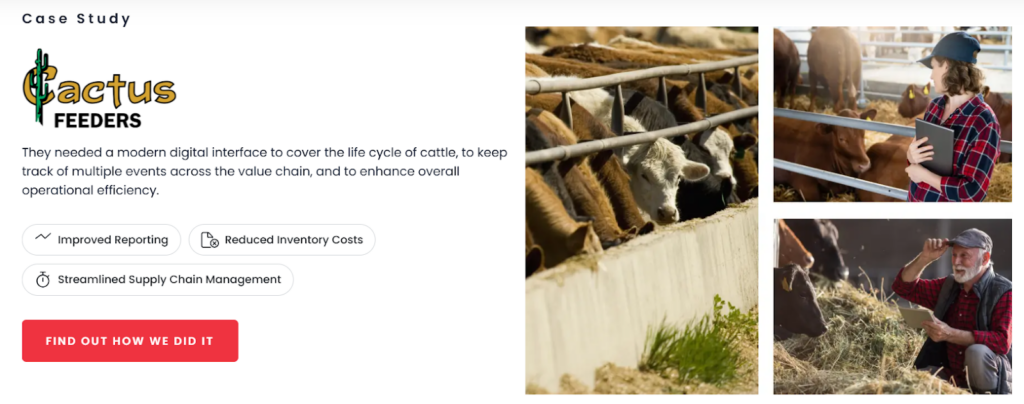
Cactus Feeders, a leading cattle feedlot and producer, struggled with disjointed systems that disrupted traceability and supplier performance tracking. Folio3 AgTech implemented a comprehensive software, addressing key operational challenges through:
- Lot Assignment: Centralized lot management for selected feed yards on a single screen.
- Pen Moves: Tracked and optimized cattle movement within farms based on space availability.
- Dead Management: Recorded mortality with reasons and validation messages for better decision-making.
- Shipments: Streamlined scheduling and tracking based on shipment details.
- Ration Master: Monitored feed distribution, tracking fed lbs, mixed lbs, and loaded lbs.
- Mill OPS Daily: Provided daily reconciliation reports for feed inventory and mill tracking.
- Vet Feed Directives: Enabled electronic vet approvals for precise feeding strategies.
By integrating these features, Cactus Feeders improved compliance tracking, data retrieval, and optimized feedlot operations
Best Practices for Implementing Cattle Traceability in Your Operation
Implementing an effective cattle traceability system requires a structured approach to ensure compliance, improve supplier evaluations, and enhance operational efficiency. The key best practices feedlots and cow-calf operators should follow:
1. Invest in a Reliable Traceability System
Adopt a cattle traceability system like Folio3 AgTech Feedlot Software to centralize data, track individual animals, and simplify compliance reporting. A digital solution reduces manual errors and ensures accurate record-keeping across all locations.
2. Standardize Data Collection Across Operations
Ensure all animals are recorded consistently, including origin, weight, health records, and movements. Standardized tracking makes it easier to compare supplier quality and meet regulatory requirements.
3. Monitor Supplier Performance with Data-Driven Insights
Regularly review supplier data, such as mortality rates, weight gains, and treatment histories, to identify top-performing suppliers and detect potential risks before they impact profitability.
4. Train Staff on Compliance and Traceability Protocols
Proper training on regulatory requirements, data entry procedures, and audit readiness ensures that traceability standards are upheld across all operational levels, minimizing compliance risks.
5. Automate Reporting for Compliance and Audits
Leverage cattle traceability software to automate data collection and reporting, reducing the time and effort needed for audits. Digital documentation ensures quick access to historical records when needed.
By following these best practices, feedlot operators can strengthen supplier compliance with ease.
Conclusion: Strengthening Supplier Accountability with Cattle Traceability
For feedlots and cow-calf producers, supplier reliability, animal performance, and compliance directly impact profitability. A robust traceability system for cattle ensures sourcing decisions are data-driven, herd management is optimized, and regulatory risks are minimized.
Key Takeaways:
Measure supplier performance. Track mortality rates, ADG, and health interventions to make informed sourcing decisions.
Reduce inefficiencies. Link animal data to sourcing, health, and feed records for better resource allocation.
Simplify compliance. Automate documentation with cattle traceability software to stay audit-ready.
Optimize profitability. Standardize data collection across locations to improve purchasing and herd performance.
With data-backed supplier accountability and automated compliance, traceability isn’t just a necessity; it’s a competitive advantage.
FAQs
How Can We Effectively Measure Supplier Performance In Feedlots?
Evaluating supplier performance involves tracking metrics such as cattle health, weight gain, and mortality rates. Implementing a comprehensive traceability system enables accurate data collection, facilitating informed decisions about cattle feed suppliers.
What Criteria Should Be Considered When Selecting A Cattle Feed Supplier?
Key factors include the nutritional quality of the feed, supplier reliability, cost-effectiveness, and adherence to safety standards. Consistent monitoring of supplier metrics ensures alignment with your operation’s goals.
Why Is A Traceability System For Cattle Essential In Modern Operations?
A robust traceability system enhances transparency, aids in disease control, and ensures compliance with regulations. It also strengthens quality control in livestock operations by tracking each animal’s history and movements.
How Does Cattle Traceability Software Improve Operational Efficiency?
The traceability software automates data collection and reporting, reducing manual errors and saving time. It provides real-time insights into herd health and supplier performance, supporting better decision-making.
What Features Should We Look For In Feedlot Management Solutions?
Essential features include real-time data reporting, inventory management, compliance tracking, and integration capabilities with existing systems. These functionalities help in ensuring compliance in cattle operations and optimizing overall performance.
How Can We Maintain Quality Control In Livestock Operations?
Implementing standardized protocols for animal health, nutrition, and handling is crucial. Utilizing cattle traceability software allows for monitoring and analyzing data to uphold high-quality standards throughout the supply chain.
What Are The Key Livestock Supplier Metrics To Monitor?
Important metrics include delivery timeliness, product consistency, pricing stability, and adherence to contractual agreements. Monitoring these factors ensures reliable partnerships and supports operational success.
How Can We Ensure Compliance In Cattle Operations?
Staying updated with industry regulations, maintaining accurate records, and conducting regular audits are vital. Implementing a traceability system for cattle facilitates compliance by providing detailed documentation of each animal’s lifecycle.

